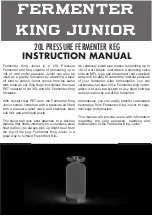
SATK22
9
Electrical Installation Continued
Connecting to the electricity supply
To extend the cable if necessary, use a flexible cable suitable for
kitchen and heating appliances and for home, kitchen and
office installations, also in humid environments subject to
medium levels of mechanical stress (e.g. H05V2V2-F: Uo/U
300/500 V). Cable minimum cross-section 3 x 0. 75 mm
2
.
Make sure that the electrical system can withstand the
maximum power consumption of the HIU, with particular
emphasis on the cross-section of the wires.
If you have any doubts, contact a qualified technician to
request a thorough check of the electrical system.
Electrical safety of the appliance is only achieved when it is
correctly connected to an effective earthing system,
constructed as specified in current safety regulations. This is a
compulsory safety requirement. Observe the applicable
regulations in force in the country of installation.
Use the cable pathway provided, as shown in figure 1.
Optional electrical connections
The electronic circuit board has a door on the front providing
access to terminal boards for optional wiring (see chapter
“Electronic Circuit Board” on page 22).
The connections in question are all low voltage or
potential-free.
Any wiring must be directed toward the exterior of the HIU,
using the pathways provided in the insulation and on the frame
(the one that is not used for routing the electric supply cable,
see figure 2).
All these lines can be routed through a single dedicated
raceway, separate from the 230 V electric cable one and
anyway separate from any other live cables.
Remote user interface connection
The HIU user interface has the dual function of control device
and room thermostat.
The remote user interface can be installed on cover of the HIU
or in the room in a position where the temperature
measurements will be of significance for control of the heating
function (in a heated room in a position where the temperature
read by the thermostat is not affected by any nearby heat
sources).
Installation on the cover of the HIU
If the remote user interface is fitted in the dedicated location
on the cover of the HIU, the thermostat function must be
disabled (in this case an external thermostat must be used, as
described in the next section).
The adjacent figures show how to install the remote control
unit:
•
Feed the cable from the regulator through the hole in the
cover (3).
•
Feed the cable from the regulator through the rear of the
interface (4).
•
Connect the two wires to the terminals on the electronic
circuit board (the cable is not polarised) (5).
1
2
3
4
5
6
7
•
Close the remote user interface and position it in its
housing on the cover (6), (7); if necessary, secure the
user interface from inside the cover by means of self
tapping screws and washers.
•
Plug in the connector (8).
The thermostat function is enabled by default (refer to the
remote control user manual for disabling it).










































